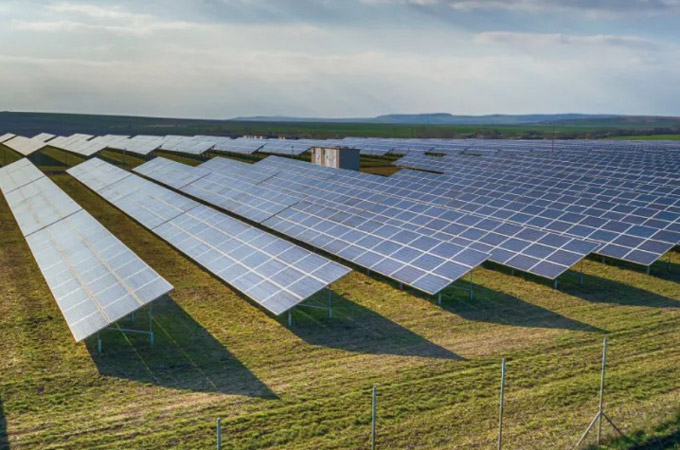The world is grappling with a mounting sustainability crisis. Global warming, depleted resources, and fragile ecosystems are some of the stark reminders that business as usual is no longer an option.
Amid the warnings, a wave of innovation is offering hope. From carbon removal technologies to regenerative agriculture and smarter energy systems, scientists, entrepreneurs, and policymakers are pushing forward ideas that could dramatically reshape how humanity lives, consumes, and powers the planet.
Below are ten of the most transformative sustainability solutions. These are some of the most innovative sustainability ideas already moving from lab and pilot to scalable reality, according to an Impact Newswire report.
1. Green hydrogen as a zero-carbon feedstock and fuel
Hydrogen produced from renewable electricity can decarbonise hard-to-electrify sectors (steelmaking, heavy industry, shipping, long-duration energy storage). It’s not a silver bullet, but a versatile low-carbon vector that complements electrification. Evidence shows global electrolyser capacity is growing fast, and governments are building hydrogen strategies to scale supply chains.
The impact is that this enables deep emissions cuts in industry and transport where batteries aren’t practical, supports seasonal energy balancing, and creates new green industrial markets.
2. Carbon removal at scale, especially Direct Air Capture (DAC) plus storage
Carbon Dioxide Removal (CDR) from nature-based methods to engineered approaches like DAC will be essential to meet net-zero targets because many scenarios require removing CO₂ already in the atmosphere. DAC pulls CO₂ directly from the air for permanent storage or use. Research and policy treat removal as a complement to rapid emissions cuts.
This helps to reverse legacy emissions and manage overshoot of carbon budgets. Note: DAC is facing cost and energy challenges. Scaling responsibly requires clean energy, strong standards, and careful siting. Recent industry reporting also underscores financial and operational hurdles.
3. The circular economy; advanced materials recovery & design for reuse
Adopting a system that keeps materials in use (recycling, repair, product-as-service models) will help reduce raw material demand, pollution, and waste. Global initiatives show businesses are increasingly committed to circular targets, and new recycling technologies are emerging.
This has a big potential to cut emissions (less mining and virgin production), avoid plastics in oceans, and create more resilient supply chains. Success requires design changes, better collection systems, and transparent policy.
4. Regenerative agriculture and soil carbon sequestration
Regenerative practices such as farming cover crops, reduced tillage, agroforestry, and integrated livestock help to rebuild soils, increase biodiversity, and store carbon in the land. Research quantifies meaningful sequestration potential when widely adopted and shows ancillary benefits for yields and resilience.
This is a low-cost climate mitigation for millions of smallholders, improved food security, and resilience against droughts and floods. Scaling needs farmer incentives, technical extension, and careful measurement to avoid overclaiming credits.
5. Grid-scale energy storage and smarter grids (long-duration & diverse storage)
As wind and solar energy systems expand, variable supply needs grid flexibility, from short-term lithium batteries to long-duration storage (flow batteries, pumped hydro, hydrogen storage) plus smarter grid software. Storage and grid modernisation are central to unlocking renewables at scale.
This reduces curtailment of renewables, stabilises electricity supply during “dunkelflaute” or seasonal lulls, and lowers reliance on fossil backup. New long-duration projects and falling battery costs make this a transformational lever.
6. Advanced nuclear: Small Modular Reactors (SMRs) and new designs
Next-generation nuclear (SMRs and modular designs) promise lower upfront costs, factory fabrication, and flexible siting. They can provide firm, low-carbon power and pair with renewables to decarbonise grids where hydropower or storage are constrained. International agencies are actively supporting SMR roadmaps and early deployment.
This provides clean baseload and dispatchable power that helps countries meet net-zero goals, especially where grid reliability and industrial heat demand require a steady supply.
7. Sustainable Aviation Fuels (SAF) and synthetic e-fuels for hard-to-abate transport
For long-haul flights and certain shipping sectors, batteries just won’t cut it. But SAFs (from waste oils, advanced biofuels) and synthetic e-fuels (produced from green hydrogen + captured CO₂) can reduce lifecycle emissions of aviation and maritime fuels. Global policy and industry targets are accelerating SAF production.
This is essential to decarbonise international transport and meet aviation’s 2050 targets — while supply and cost remain major scaling challenges.
8. Vertical farming and controlled-environment agriculture (CEA)
CEA and vertical farms use stacked production, LEDs, hydroponics/aeroponics and automation to grow food with far less water, land, and transport footprint; and with year-round, local supply near cities. New research and pilot projects show resource savings and yield gains, especially for high-value crops.
This helps to cut food-miles, increases urban food resilience, and reduces water use dramatically, particularly valuable where arable land or water is scarce. Economic viability improves as energy and automation costs fall.
9. Water-energy innovations: solar desalination & large-scale water reuse
Freshwater scarcity is worsening. But combining renewables with modern desalination (and smarter wastewater reuse) reduces the energy and carbon footprint of producing potable water. Advances in solar-driven and hybrid desalination are making coastal and arid regions more water-secure while lowering emissions. Treated wastewater reuse as part of a circular water economy reduces pressure on freshwater sources.
This technology will strengthen climate adaptation and urban resilience, keep agriculture and industry running during droughts, and reduce ecological stress from over-abstraction.
10. AI, IoT and digital twins for efficiency at scale
Intelligent software, such as AI optimising grids, digital twins of buildings and factories, IoT sensors in agriculture, can cut wasted energy, predict maintenance, optimise material use, and boost yields. Studies and pilot deployments show large percentage energy savings in buildings and improved yields in precision agriculture.
This multiplies the effectiveness of the other nine ideas (better grid balancing for renewables, optimised water and fertiliser use for regenerative farms, predictive control in vertical farms). It’s a force multiplier: more efficiency, lower demand, smaller infrastructure needs. - TradeArabia News Service










